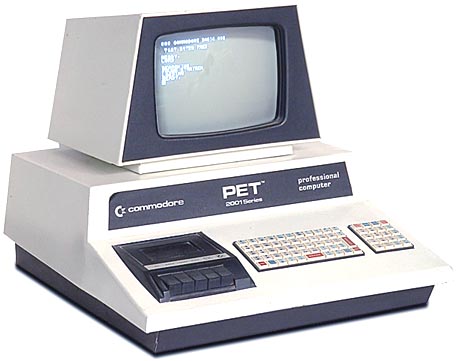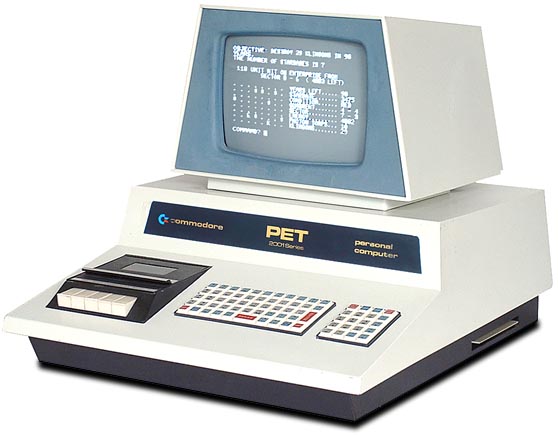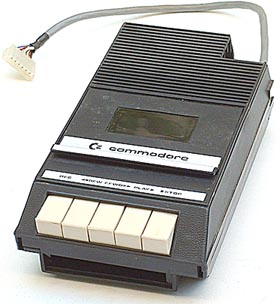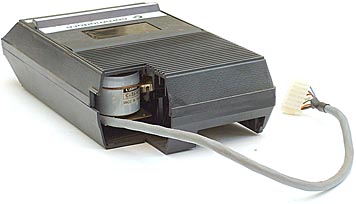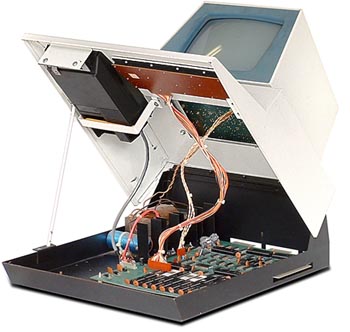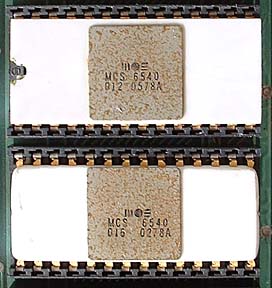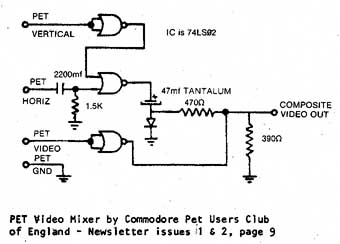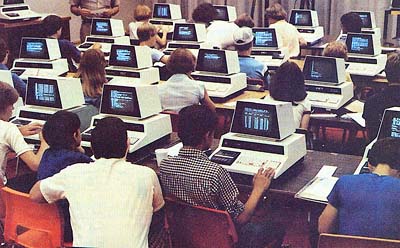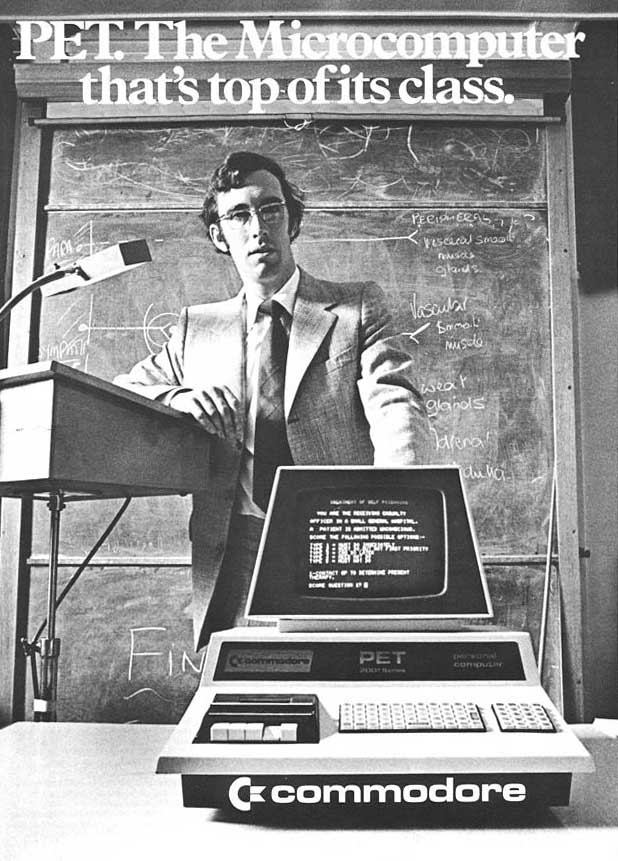|
|---|
History of Commodore Computers |
- 1953: Jack Tramiel opens a typewriter repair shop in the Bronx, New York.
- 1954: Tramiel founds Commodore.
- 1955: Tramiel relocates to Toronto and becames the biggest manufacturer of low cost office furniture in Canada
- 197? Commodore manufactures calculators and digital watches, but gets killed by Texas Instruments.
- 1976: Commodore purchases MOS Technologies, an American maker of IC chips. MOS' senior engineer, Chuck Peddle
was working on the 6502 micro processor. A popular 8 bit processor that soon would be used in machines like
the Apple II, the Atari 800, the Commodore PET and 64.
- 1977: January - Commodore first shows a prototype PET computer at the Winter Consumer Electronics Show.
- 1977: January - Commodore's Chuck Peddle shows the first PET to Radio Shack, hoping to have Radio Shack sell it.
- 1977: April - Commodore Business Machines Inc. shows its PET 2001 computer for US$600. The computer shown is a one-of prototype.
- 1977: June - Commodore shows its first production PET computers at the Summer Consumer Electronics Show.
- 1980: May - Commodore Business Machines introduces the CBM 8032
microcomputer, with 32KB RAM and an 80-column monochrome display.
- 1980: May - Commodore Business Machines introduces the CBM 8050 dual 5 1/4-inch floppy disk drive unit.
- 1980: Commodore Japan introduces the VIC-1001 (later called the VIC-20 in the USA).
- 1981: January - Commodore announces the VIC-20, for US$299. During its life, production peaks at 9,000 units per day.
- 1982: Hi-Toro Incorporated is formed by a group of midwest investors trying to
cash in on the video game craze. The name was later changed to Amiga, Incorporated after
being confused with the lawn-mower manufacturer, Toro. Within one year, there are rumours of an incredible
computer codenamed Lorraine featuring unheard of graphics and sound capabilities, multitasking,
80 column display, 5+ megs of Ram and MORE!
- 1982: January - Commodore announces the Commodore 64 microcomputer, showing a prototype at the Winter CES, for US$600) for US$595.
- 1982: January - Commodore introduces the 16K SuperVIC.
- 1982: April - Commodore announces the B (700) and P (500) series of microcomputers, for US$1700-3000.
- 1982: June - Commodore Business Machines introduces the BX256 16-bit multiprocessor professional microcomputer, for US$3000.
- 1982: June - Commodore Business Machines introduces the B128 microcomputer, for US$1700.
- 1982: June - Commodore Business Machines announces the P128 microcomputer. It is to be an enhanced Commodore 64 with 128KB RAM expandable to 896KB. Price US$995.
- 1982: September - Commodore Business Machines begins shipping the Commodore 64. Suggested retail price is US$595.
- 1982: Commodore releases the 1540 Single-Drive Floppy for the VIC-20.
- 1983: January - Commodore Business Machines begins selling the Commodore 64 through mass merchants, which drops the retail price to US$400.
- 1983: January - At the Winter CES, Commodore debuts the Commodore SX-100, a portable version of the Commodore 64, with bundled B/W screen, for US$995. Price with color screen and two drives is US$1295.
- 1983: January - At the Winter CES, Commodore demonstrates the HHC-4 (Hand-Held Computer). It features 24-character LCD screen with 4 KB RAM expandable to 16 KB. This was one of Commodore's pre-PET business products. Price is US$199.
- 1983: January - Commodore's sales of VIC-20s reaches 1,000,000.
- 1983: January - Commodore introduces the SX-64, the first color portable computer. Weight is 10.5 kg. It incorporates a 5-inch color monitor and one or two 5.25 inch floppy drive. Price is US$1600.
- 1983: April - Commodore drops dealer prices on the VIC-20, which allows it to drop below US$100 retail, the first color computer to hit that mark.
- 1983: April - Commodore offers a US$100 rebate on the purchase of a Commodore 64 on receipt of any computer or videogame unit.
- 1983: May - Commodore ships the Commodore Executive 64. It features 64KB RAM, detachable keyboard, 5-inch color monitor, 170KB floppy drive, for US$1000.
- 1983: June - Commodore drops the dealer price of the Commodore 64 to US$200, allowing the retail price to drop to US$200-230.
- 1983: June - At the Summer CES, Commodore shows the B128/256-80, formerly called P128. It has a monochrome monitor with 80-column display.
They also show the Executive 64, formerly the Commodore SX-100. It has a 6-inch color monitor and is priced at US$995.
- 1983: Commodore debuts the Exactron Stringy Floppy, a high-speed cassette-based data storage device.
- 1984: January - Jack Tramiel,President of Commodore International, has a disagreement with the major share holder, Irvin Gould.
Tramiel leaves the company and a few months later buys Atari.
- 1984: January - At the Winter CES, Commodore shows the SX-64, formerly called Executive 64. It now includes a 5-inch monitor, and one 170KB 5 1/4 disk drive, for US$995.
- 1984: January - Commodore announces that during 1983, Commodore sold US$1 billion worth of computers, the first personal computer company to do so.
- 1984: June - Commodore announces the Commodore 16. Former name was TED-16 and is expected to sell for around US$100, and marketed as "The Learning Machine".
- 1984: June - Commodore announces the Commodore Plus/4, formerly called the Commodore 264. It will now feature four built-in programs, not just one. Price should be around US$300.
- 1984: August - Commodore purchases Amiga Corporation.
- 1984: Commodore stops manufacturing the VIC-20.
- 1985: January - Commodore unveils the Commodore 128 Personal Computer. It functions as three computers in one: a complete Commodore 64, a CP/M mode, and a new 128KB mode.
- 1985: January - Commodore announces the 1571 Disk Drive, for the Commodore 128.
- 1985: July - Commodore unveils the new Amiga 1000 in New York, for US$1300.
- 1985: Commodore stops production of the Commodore 64 several times during the year, restarting each time based on public demand.
- 1986: Commodore releases Transformer software for the Amiga, which, along with the Commodore 1020 5 1/4-inch disk drive, provides limited MS-DOS compatibility.
- 1987: January - Commodore announces the Amiga 500 and the Amiga 2000.
- 1987: January - Commodore debuts the Commodore 128D in the North American market.
- 1988: December - Commodore announces the A2286D Bridgeboard for the Amiga 2000. The A2286D contains an 8-MHz Intel 80286 and a 1.2MB 5 1/4-inch disk drive.
- 1988: Commodore introduces the Amiga 2000HD and the Amiga 2500.
- 1989: January - Commodore announces that 1 million Amiga computers have been sold.
- 1989: November - Commodore announces the Amiga 2500/30. It is essentially an Amiga 2000 with a 2630 Accelerator Board (25-MHz 68030 and 68882 math coprocessor).
- 1990: April - Commodore offers Amiga 1000 owners US$1000 to trade in their Amiga on a new Amiga 2000.
- 1990: June - Commodore ships the Amiga A3000 computer.
- 1990: September - NewTek ships the Video Toaster, a hardware/software video effects tool for the Commodore Amiga 2000, for US$1600.
- 1990: Commodore announces the Amiga 3000. Prices start at US$4100 with a monitor.
- 1991: January - Commodore releases the CDTV package. It features a CD-ROM player integrated with a 7.16-MHz 68000-based Amiga 500. List price is US$1000.
- 1992: Commodore introduces the Amiga 600 for a base price of $500.
- 1992: September - Commodore introduces the Amiga 4000.
- 1992: December - Commodore introduces the Amiga 1200.
- 1994: Commodore International and Commodore Electronics (two of the many international components of Commodore Business Machines) file for voluntary liquidation.
- 1995: April - At an auction in New York, ESCOM buys all rights, properties, and technologies of Commodore.
- 1997: Gateway buys bankrupt Amiga.
Source:
Chronology of Events in the History of Microcomputers
| |
|---|
|
